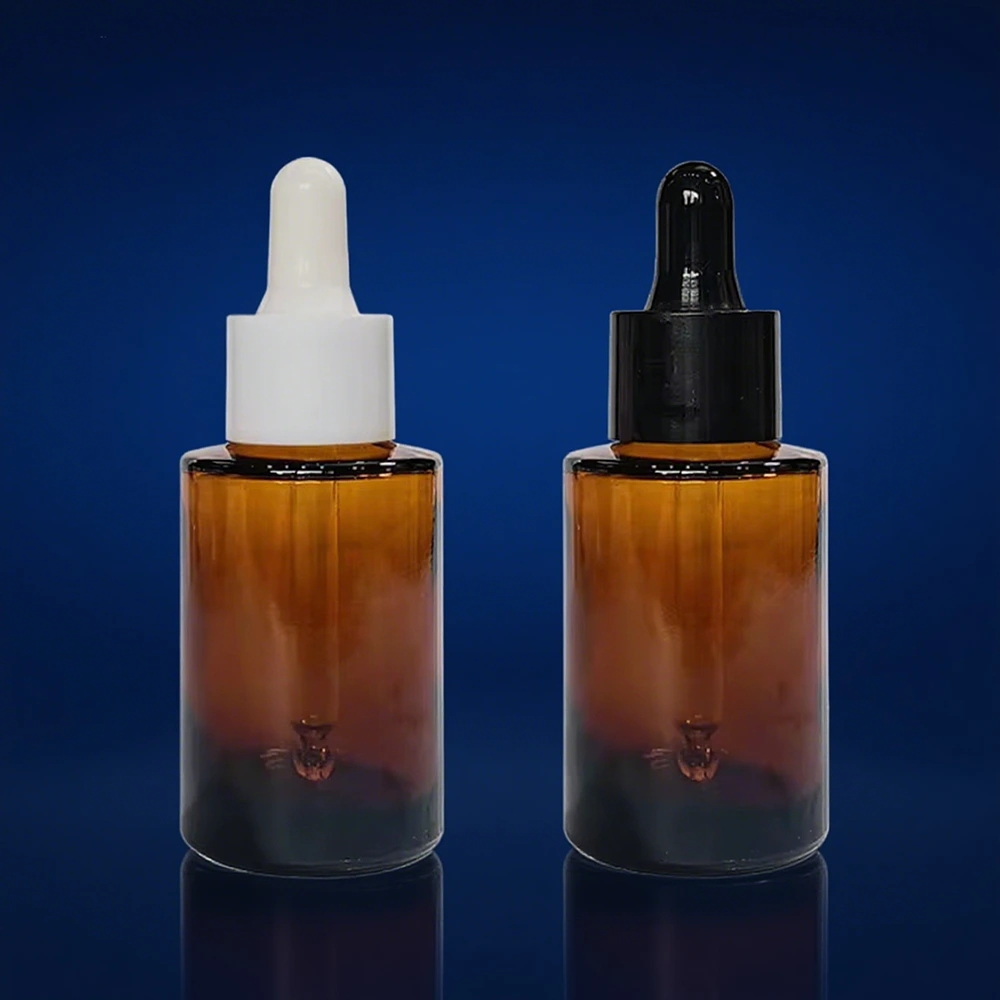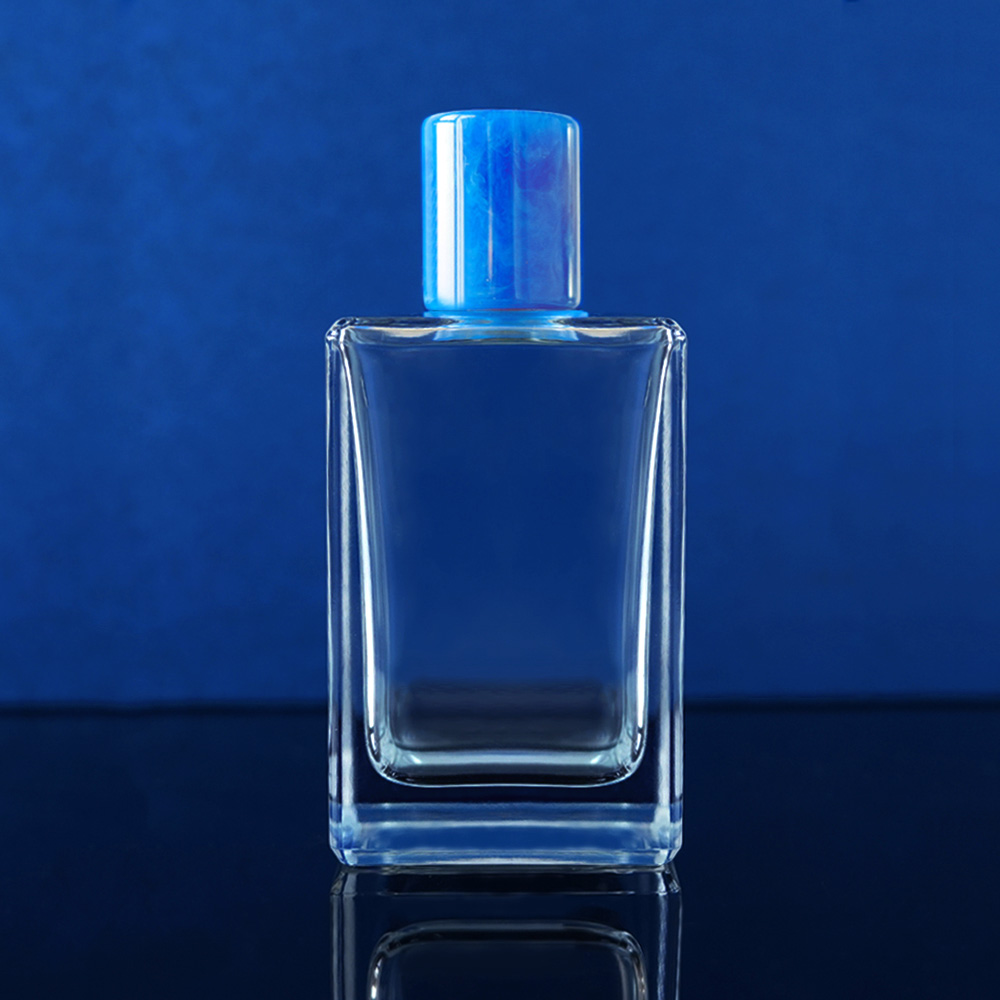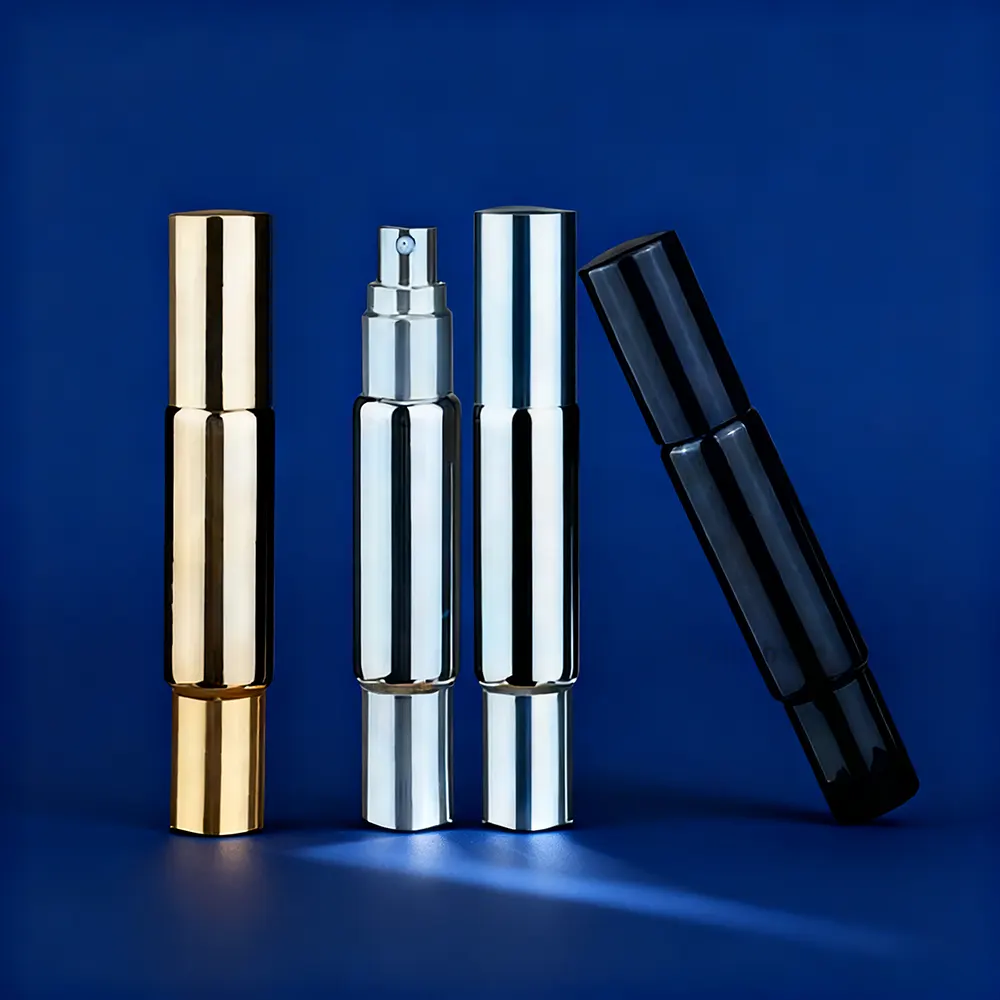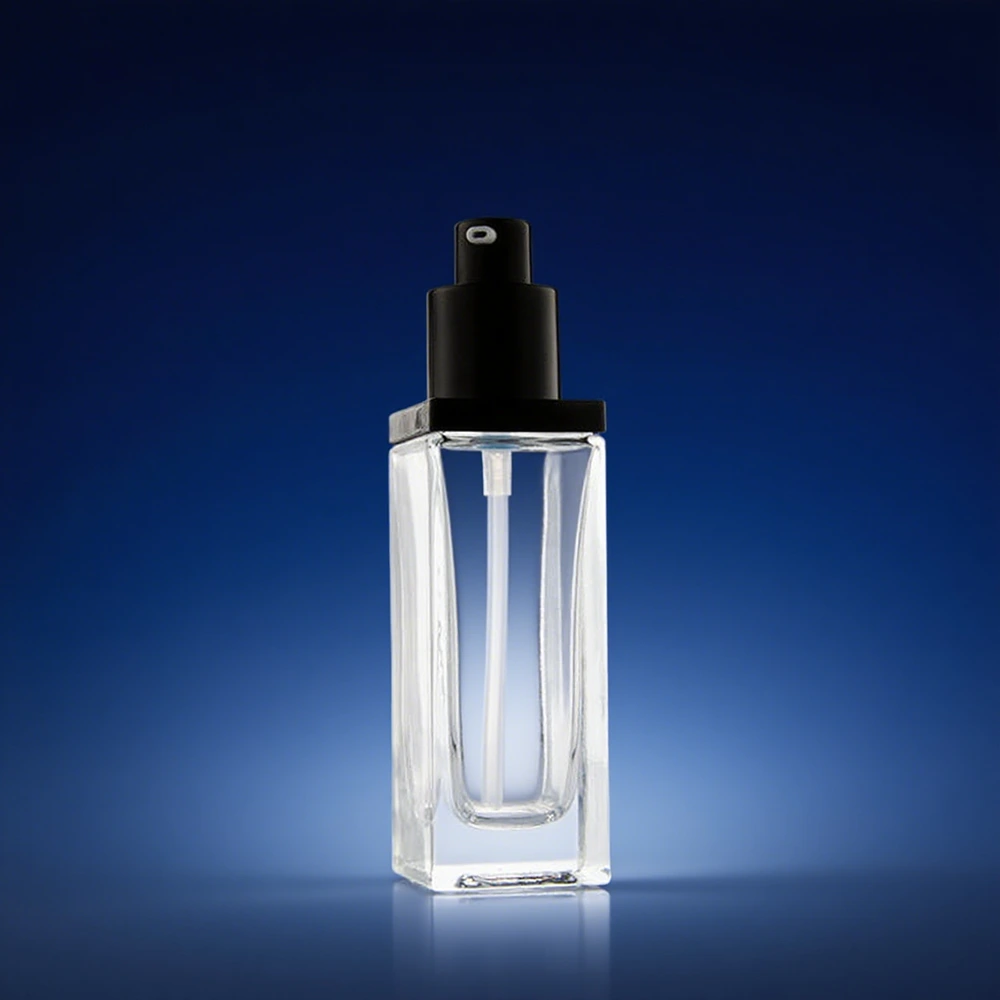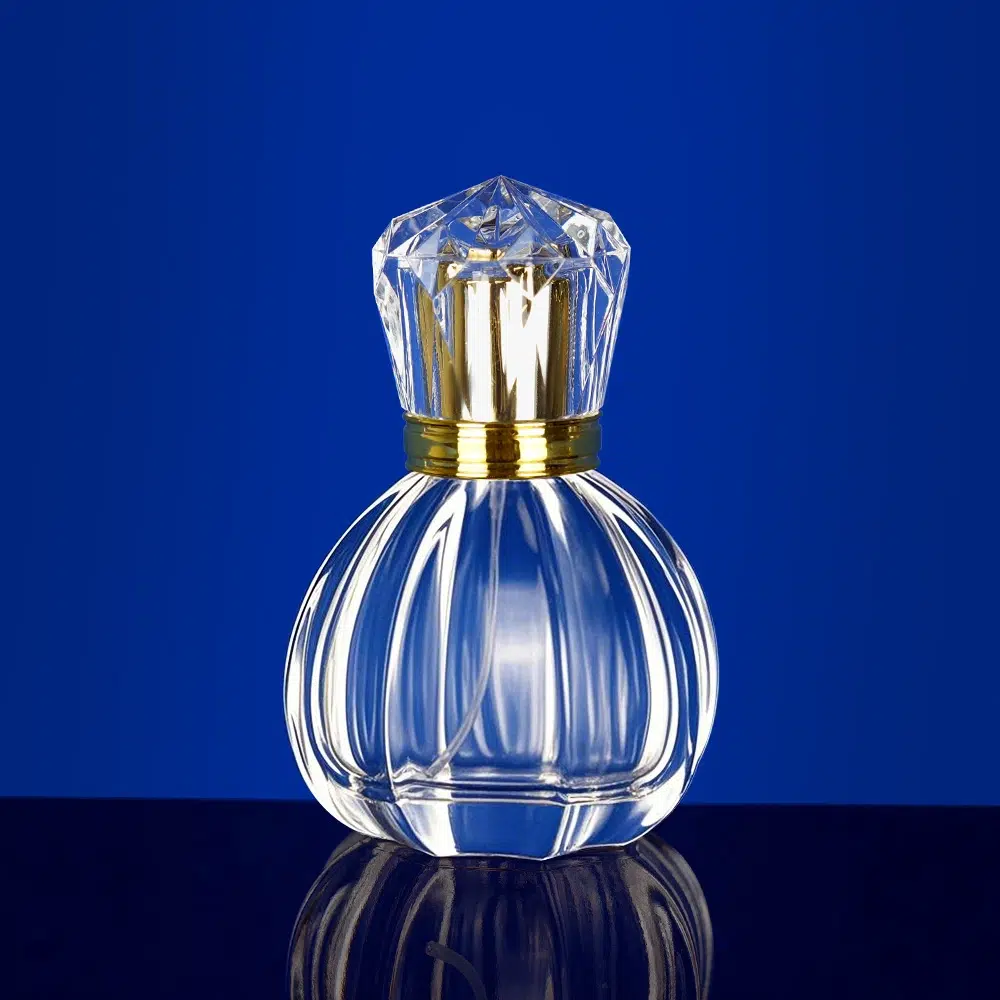
Cum determină producătorul de sticle de parfumuri diferențierea mărcii
Cuprins
2. Core Capabilities of a Glass Perfume Bottles Manufacturer
Efficient, cost-effective production of custom shapes, colors, and caps for mass-market brands relies on advanced manufacturing. sticle de parfum din sticlă The “press & blow” method is the main method for high-volume glass bottle manufacturing. A metal mold is filled by pressing molten glass, after which ah air pressure is used to obtain the final shape. The “press & blow” method along with general blow molding requires very precise and repeatable pressure control if the product quality is to be maintained at a consistent level.
At present, numerous independent sections operate in multi-section machines and advanced PLC technology with motion control algorithms is also used. Due to this, temperature, timing, and pressure can be monitored in real-time, thus allowing an output with uniform quality and high production rates to be achieved.
Design software is the key for 3D visualization, taking into account such features as volume (30ml, 50ml, 100ml), neck finish (15mm-18mm). The first models are most often 3D printed and they serve to check the shape, the size, the weight (200-400g) as well as the ergonomics of the item before the mold is created.
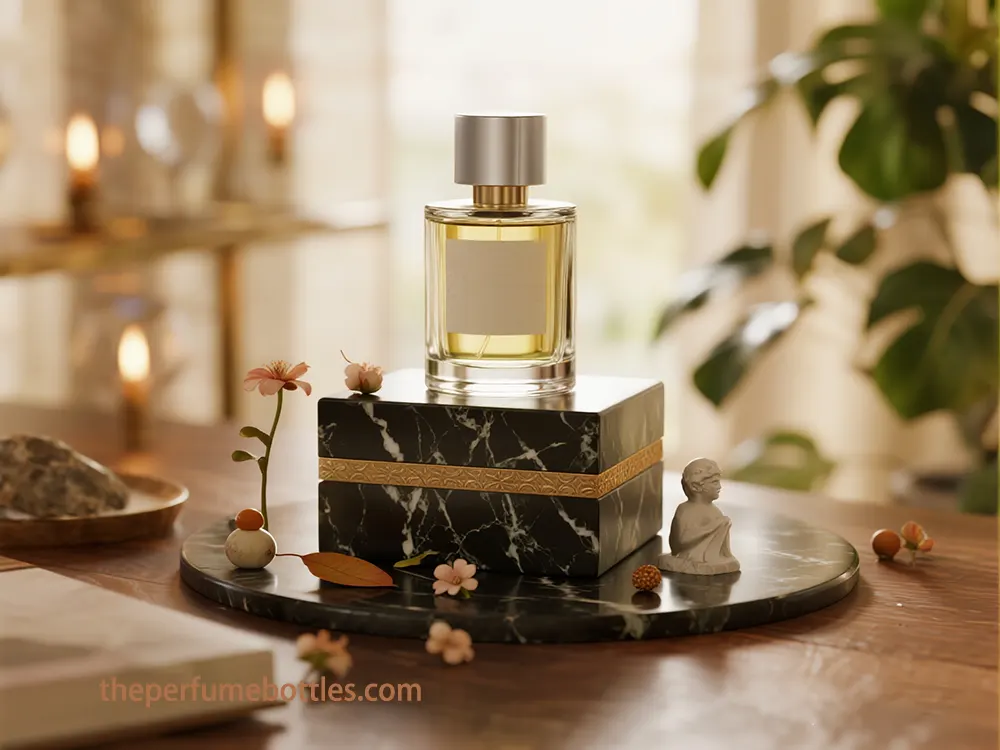
Obțineți mostre gratuite
A full range of decoration techniques provides the possibility of high-volume personalization:
Screen Printing (Silkscreen):
A method of screen printing (by means of silkscreen) is versatile, long-lasting, and quite simple; Also, it is readily automatable with PLC machines which can print as much as 4-5 colors on various shapes (35-50 pieces/minute) and can support UV reactive and metallic inks.
Hot Stamping (Foil Printing):
By means of heat and pressure, metallic or colored foil is given a “new” surface with the characteristics of satin or semi-gloss or high-gloss for a luxurious look. Robotized machines decorate up to 360 degrees on various bottles (up to 2,500 parts/hour), thus providing a way of conveying high value for a product.
Frosting (Acid Etching/Sand Blasting):
- With this method, a translucent matte finish is obtained, thus the bottle looks and feels better, and the content is protected from harmful rays. A mass market decorating technique, it is rather economical. Spraying/Color Coating:
- A food-safe spray coating is the method through which the desired color is “baked” on the glass surface. Color can be added during production for large runs. Some of the newest methods include marble and thermochromism coatings. The method involves very thin inks which are cured using a UV light at once and thus the printing is of very high resolutions kinds of complex designs, gradients, or photographic images having good vibrancy and long life and being suitable for productions of any size.
- Relative to other printing methods, the process is slower and consequently a solution to this technological limitation should be found if you want to use it for high volume manufacturing. However, it is ideal for complex designs and most accurate providing the maximum output is at the gentlest work. It is the laser beam that performs the trimming of the printed image, logo, or text, and the process is completely automatic as it is software-controlled.
- Is achieved by the use of a vacuum apparatus and involves the application of a very thin metal layer leading to a reflective, mirror-like finish which both shields the product from UV rays and elevates the product in terms of luxury, resistance to wear, and corrosion protection.Flocking:
- Imprimare UV: Holographic Coating:
- Tampografie: 2.3. Cap Customization and Material Selection
- Gravură cu laser: For plastic caps, injection molding plays a pivotal role. The costs of the molds that are made for lids and caps are usually between $7,000 and $40,000. Although full 16-cavity pump head molds can cost more than $120,000, by merely changing 2 key components (e.g., actuator + threaded collar) one can achieve a significant reduction in tooling expenses down to $12,000-$15,000, thereby maintaining the balance between the degree of customization and the cost of mass production. The value of a product can be extremely elevated by just a large increase in the weight of its cap which gives it a more luxurious look and feel.
- Acoperire în vid (metalizare): Strict quality control is performed at every stage, starting from the raw material and ending with the finished product. The automated inspection systems involve the use of high-speed cameras, infrared sensors, and precision measurement tools that allow for real-time, 360-degree dimensions, and defects verification of the object inspected. Multi-level checks (hot-end sampling, post-annealing inspection) are very important. In addition to these, continuous monitoring of furnace temperatures, batch mixing, and mold inspection are equally important.Automated systems have shortened the defect detection time from over 8 hours to 30 minutes, thereby significantly reducing waste and CO2 emissions.
- 3. Strategic Differentiation: Custom Glass Perfume Bottles for Brand StorytellingDesigned bottles, color schemes, and cap options that are personalized help mass-market brands to express their brand identity, increase the brand value that is perceived by the customers, and create functional features that catch the attention of the consumers and have a positive response from them.
- 3.1. The Semiotics of Bottle Shape and Design are “emotional ambassadors” that portray the brand identity and the story, thereby, having the most influence on the purchase made even before the smell is experienced. Design elements such as shape, color, material, cap, weight, logo, and typography together create a multisensory experience that familiarizes the consumer with the brand.
Rectangular/Square
(e.g., Chanel No. 5) indicate precision, strength, and everlasting nature.
Curvaceous/Rounded
(e.g., Jean Paul Gaultier) suggest sensuality, being lovable and soft, and thus can attract a wide audience.
Sleek, Minimalist, Cylindrical
(e.g., Jo Malone, Byredo) are all modern, simple and versatile which is why they are suitable for contemporary and unisex fragrances.
Unique/Unconventional
(e.g., Thierry Mugler’s “Angel” star, Moschino’s “Toy” teddy bear, Carolina Herrera’s high-heel) express loud ideas, reflect the person’s uniqueness and become one of the very few that people can easily remember thus raising recall by more than 30%.
Sticle de parfum bottles are elegant;
- broader shapes convey strength.
- 3.2. The Psychology of Color and Finish Colour psychology corresponds to the scent character and the potential consumer.
- Warm colors (Red, Orange, Yellow) bring about the feeling of being energetic.
- Cool colors (Blue, Green) give the impression of being relaxing.
- Neutral colors (Black, White) are the ones that express being classy. Pink is indicative of love;
Metallic tones
(Gold, Silver) give the impression of being luxurious.
- Gradient/two-tone designs are becoming more and more popular.
- Even the colour of a bottle can change the way a person smells a scent. Textures and finishes invite the sense of touch to come along with sight. Frosted glass is a perfect example of minimalist elegance being brought in by the material.Matte finishes speak of a certain refined style; glossy sheens and crystallizing coatings give a feeling of being everlasting.Metalizing makes an item look very luxurious.Soft-touch labels and embossed logos are tactile ways of presenting luxury.
- 3.3. Connecting with Target Demographics Successful brands analyze and know the preferences, culture, and purchasing behavior of their customers.
- Women Consumers: Prioritize aspects such as quality, appearance, color, and production, thus leading to a trend of custom emotionally and aesthetically attractive bottles. Younger Generations (Gen Z, Millennials): Desire personalized, authentic, and customized scents that represent their values (e.g., ethical sourcing). They are willing to pay more for unique, visually attractive, and “Instagram-worthy” products that lead to social media engagement.
- The design of the packaging mirrors the cultural values; for example, Middle Eastern markets are characterized by the use of vibrant gold and complex patterns, whereas the Asian designs are more focused on the simplicity. 3.4. Beyond Aesthetics: Ergonomics and Interactive Elements
- Functionality and user experience are indispensable. Malfunction of the cap sealing, hard-to-use nozzles, or awkward shapes, all are factors that lower the satisfaction level of users. Packaging has to not only protect the product but also be of simple use (ergonomics, grip, size, capacity).
Interactive components such as QR codes, NFC tags, and AR features enrich the unboxing experience, offer product information, and get the users involved, thus making the packaging “Instagram-worthy”.
4. Optimizing Value: Cost Implications and ROI of Mass-Market Customization
Custom glass perfume bottle investments entail balancing one-of-a-kind features with reasonable prices. The return of investment (ROI) goes beyond sales to include brand equity and loyalty.
- 4.1. Cost Components and Economies of Scale Costs are affected by :
- Mold Creation:The main barrier is the initial investment and it is usually in the range of $3,000-$10,000+ for a complicated design and can be up to a maximum of $50,000.
- Nuanțe culturale: Regular glass costs $0.50-$5 per bottle/ ; plastic parts/atomizers $0.10-$1; luxurious metal parts up to $10 per bottle.
Energy Consumption:
Most of the energy, i.e., 70% of it, is used for melting/refining and thus, it accounts for 20-30% of the total production costs.
Labor Costs:
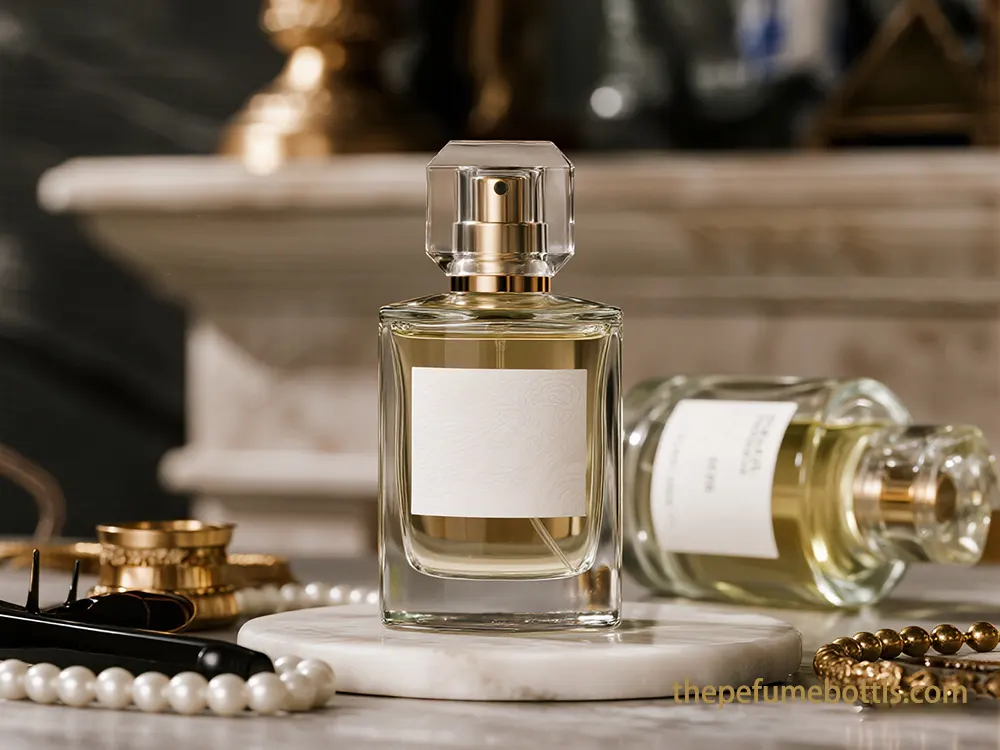
Obțineți mostre gratuite
Standard decoration 0.10-0.50/bottle; complicated details $0.50-$2; extremely customized services $75+.
Logistics/Packaging:
Shipping 0.02-0.10/unit; outer packaging 0.50-10+.
That is the reason why achieving
- Economies of scaleis so important. The cost per unit decreases drastically with the volume. While small batches are priced at 5-10/unit; large-scale production costs 1-3/bottle.Fully custom designs usually have high minimum order quantities (MOQs), most times 10,000+ units, with some factories requiring 50,000-300,000 units for a minimum economic viability.
- Stock decorating is more convenient for startups, since there is no mold fee and lower MOQs (500-3,000 units), thus the financial risk of market testing is minimized.4.2. Measuring the Return on Investment (ROI)
- Custom packaging is a planned business move that brings a lot of profit: Consumer Influence:
- Most of the time (72%) consumers are using packaging as the main decision criterion on what product to buy; about 60% of them are avoiding unattractive packaging.Brand Recall/Recognition:
- Decorare/Finisare:Perceived Value/Premium Pricing:
- One of the biggest advantages is the ability to elevate the perceived value level, and thus, to be able to charge the consumers higher prices. Consumers are willing to pay up to 35% more for high-quality packaging. Direct Sales Uplift:
Custom packaging may lead to an increase in sales by up to 40% and in-store sales by 30% (NielsenIQ). Aesthetic bottles lead to 25% more consumers’ purchasing intentions. Strategic Differentiation: A requisite for survival in a market which is expected to reach $35 billion by 2030.
Brand Loyalty/Emotional Connection:
Through love for a brand, the happy customer will voluntarily generate repeated buying.
Sustainability as Value Driver:
- 52% of consumers opt for environmentally-friendly brands; eco-friendly communication accounts for 28% sales increase (McKinsey, 2023). Protection Against Counterfeiting:
- Harder to imitate uniquely crafted custom shapes. Operational Efficiency:
- Helps in freeing the company of the costly cycle of damaged goods and the associated expenses. “Unboxing Experience”:
- Mutual communication between involved parties facilitated by social media, at the highest level possible, and being talk-of-the-town marketing. Key Performance Indicators (KPIs) comprise sales, customer satisfaction, brand perception, operational efficiency, engagement, and return rates. Besides, brand recall and customer lifetime value are of great importance as well.Financial modeling (time series, multiple linear regression) is one of the ways of ROI forecasting.
- 5. Sustainable Solutions: Eco-Conscious Customization for Mass-Market Appeal Growing consumer demand for eco-friendly products is leading to sustainable manufacturing of mass-market glass perfume bottles.
- 5.1. Recycled Content and Lightweighting The use of Post-Consumer Recycled (PCR) glass is a trend in the industry to lower the carbon footprint and the demand for virgin materials. Some companies have achieved up to 60% PCR, while L’Occitane is using 100%. The EU average for recycled content was 52% in 2021.
- The reduction of glass without the sacrifice of strength or appearance brings both environmental and economic advantages: less use of raw material, lower production/transport costs, and fewer CO2 emissions. Today, bottles are 30% lighter than those of 20 years ago, and there are 70% fewer CO2 emissions than 50 years ago. Borosilicate glass is helping to have thinner and at the same time durable walls. 5.2. Refillable Systems and Consumer Adoption
- The use of refillable perfume systems is a waste reduction method as well as a source of cost savings. The luxury brands like Guerlain and Mugler have refillable lines, which leads to a waste cut of up to 45%. The global refillable perfume bottle market size is expected to be $1.5 billion by 2025, with a 7% CAGR from 2025 to 2033. Consumer adoption, however, remains low (<1% in a 2023 survey) even though 79.3% of the respondents consider sustainability to be important. Barriers to sustainability include the higher initial costs of sustainable products, concerns about contamination, scepticism regarding the environmental benefits, limited availability of brands, and hesitation to make a change. On the other hand, adoption will increase if there will be a clear environmental demonstration (34%) and if the favorite brand will participate (43%). People prefer refill stations for bulk purchases.
- 5.3. Certifications and Regulatory Frameworks Certifications driving sustainability:
- Cradle to Cradle Certified Assessment includes material health, material reutilization, water stewardship, energy from renewable sources, and social fairness.
Acknowledges excellent social and environmental performance.
Ecocert Certification:
Certifies organic/natural cosmetics with very strict criteria for ingredients, production, and packaging.
EcoVadis Ratings:
- Conținut reciclat (sticlă PCR):Global Recycled Standard (GRS):
- Greutate redusă: FSC-certified paperboard:
For the outer packaging made from wood from responsibly managed forests.
The EU regulations, such as the Packaging and Packaging Waste Regulation (PPWR) (mid-2026), require a harmonized reuse system, deposit return schemes, and packaging that can be recycled by 2030. It also specifies waste reduction targets (5% by 2030, 10% by 2035, 15% by 2040), reduces “substances of concern,” and implements Extended Producer Responsibility (EPR).
5.4. Consumer Willingness to Pay for Sustainable Packaging
Most consumers will pay more for sustainable packaging. As per the Trivium Packaging’s 2023 report, 82% of consumers would pay more, which is an increase from the previous years.Consumers are ready to pay 16% more for a packaging that is partly made of paper.63% of the respondents say that for the refillable beauty products they would expect 10-20% of the price to be saved to encourage the purchase of such products.Younger consumers and high earners are especially concerned and willing to pay more.
Suggested Solutions for Sustainable Customization:
- Certificat Cradle to Cradle™: Easy-to-use, spill-free devices; clear instructions; “smart packaging”.
- These coatings form oil-resistant, anti-fingerprints, and water-rich surfaces, widely used in consumer electronics. On the one hand, long-term savings can be brought to attention; on the other hand, tiered pricing (e.g., 10-20% cheaper refills) can be offered.
- Improve Availability/Visibility: Make products more accessible to a wider audience; clear in-store signage.
- Strengthen Marketing/Transparency: Communicating the environmental benefits of the product in a clear way; use “eco-labels” to facilitate trust and counter “greenwashing”.
- Address Aesthetic/Quality Perceptions:Create environmentally friendly packaging that keeps the product luxurious and visually appealing and is also appropriate for social media.
- Overcome Attitude-Behavior Gap: Provide consumers with the options to make sustainable choices that are convenient, affordable, and aesthetically pleasing.
6. Future Horizons: Innovations in Mass-Market Perfume Bottle Customization
The future of mass-market perfume bottle customization is influenced by progressive technologies, sophisticated materials, and the changing needs for personalization and eco-friendliness.
6.1. How Glass Perfume Bottles Manufacturers Use AI for Design and Hyper-Personalization
AI reinvent packaging design by looking at trends and demographics to figure out the layout, color, and pictures that fit best, thus, the designing part becomes easier.Procedures such as DesignNBuy give access to AI design instruments, which help in live modification and result-demanding printing.Packify.ai creates images of the products and gets the ideas from the user’s instruction, thus the whole designing process is done quickly.AI tools like Fragrance Innovator function as the source of inspiration for creative bottle designs, and the input may come from a variety of different fields.Having this technology at hand, one could easily imagine very seldom use of regular, generic and low-cost consumer packaging through custom productions of personal bottles.Namely, the biometric data may serve as a medium carrying Phygital ID for bot-spam labeling for making each person’s unique product available.
- 6.2. Advanced Manufacturing and Digital Printing The technology enabling direct 3D printing of glass bottles for large-scale usage is still in its infancy, while on the other hand, it is already widely used for craft first runs, on-demand decoration and ornamentations. Hence, it can be part of research, development and packaging design, as well as marketing, in the form of brand and product communication timing, content, presentations and activations.Viktor&Rolf executed 3D methodology in the production of a limited-edition Flowerbomb with a complex pattern of blossoms.
- Direct-to-Glass Printing:Digital printing is quite a “game-changer” when it comes to visually appealing, high detail, color intense pictures directly on glass with support for photorealistic manuals and intricate patterns.UV printing enables logos to come in any color, while the text can be pure white and the metallic effect of printing made directly on glass of even a single unit (1-2 pieces).The above techniques put forward the idea of lasting and reliable stand-out labels for glass containers.
- 6.3. Immersive Consumer Engagement with AR and Smart Packaging AR (Augmented Reality) is a go-to tool for the packaging industry in terms of the next-level consumer engagement. A consumer through an AR-equipped smartphone can get immersive virtual unboxing, scent stories, optical scent profiles, or first-person views of the customized bottles upon scanning a package.Jo Malone’s AR experience divulges scent relationships.Paco Rabanne’s “connected” bottle with a tiny NFC chip goes beyond providing access to games, playlists, and AR features by offering the user a unique, interactive experience.This “smart packaging” (QR codes, NFC chips) also allows for real-time anti-counterfeiting, brand storytelling, and customer engagement of the exclusive kind.
- 6.4. Innovations in Glass Composition and Coatings New Glass Formulations:
- Ultra-lightweight Glass:Contributes less CO2 in the production and transportation and saves money too. Verescence was able to realize an overall weight reduction of up to 60% without compromising the luxury component. The use of borosilicate glass allows for thinner, more durable walls.
- High-Strength Glass:Borosilicate glass offers thermal shock resistance for complex shapes. To this end, the performance and durability of the product can be improved also through the use of several coating technologies.
Enhanced Clarity:
Super flint glass is chosen for its superlative clarity in luxury fragrance packaging.
Scratch/Chemical Resistance:
With the GLASNOL® type of coating, the treated surface not only acquires a high-gloss effect but also becomes more resistant to wear and tear over time. Metallization (UV-coating) improves wear, corrosion, and scratch protection.
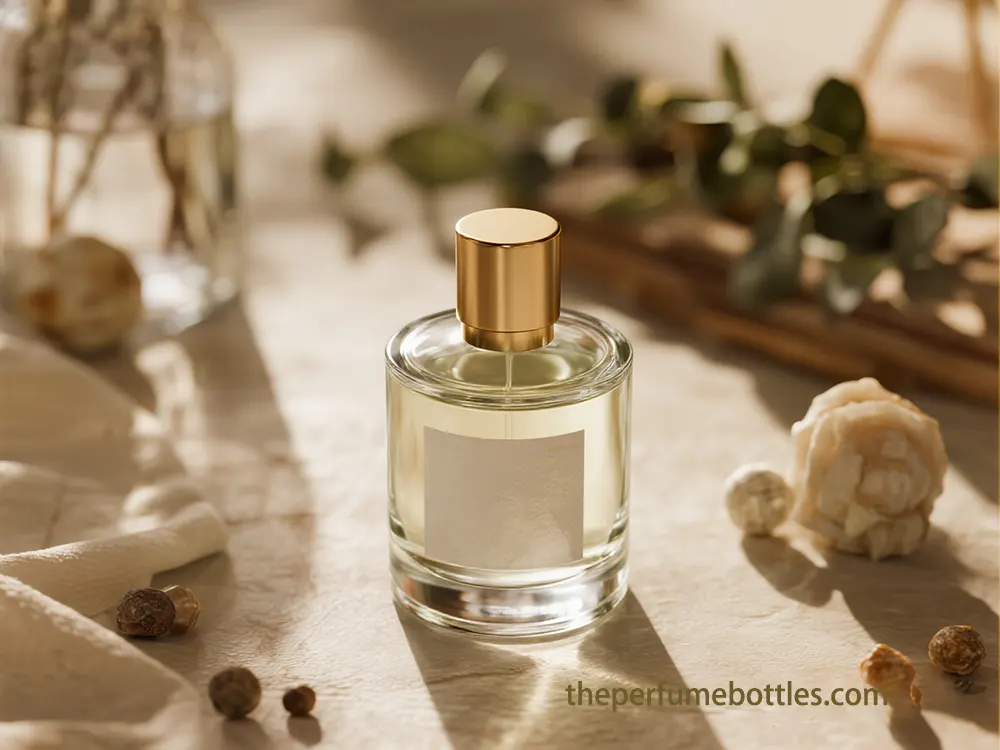
Obțineți mostre gratuite
Stoelzle’s Lumi Coat (Oct 2024) is a UV protector with excellent optical transparency. Heinz-Glas’ “Invisible Shields” are the integration of UV varnishes. Nano-coatings here aim for 99% of UV filtration in transparent bottles.
- Imprimare 3D: Matte coatings give the product a modern, elegant, and at the same time, a satinlike touch. Flocked materials imitate the softness and the velvet-like texture.
- Smart Coatings: Thermochromism changes color with temperature. Researchers are considering self-cleaning glass. Holographic coating is one of the ways to get iridescent effects.
6.5. Alternative Transparent Materials and Cost-Benefit Analysis
The industry looks into possible alternatives to conventional glass:
Bio-based/Recycled Plastics:
- Dow collaborates with LVMH on creating bio-based materials (e.g. used cooking oil) and plastic waste materials. The future of biodegradable plastics (made of sugarcane, corn starch) looks bright from the ecological point of view. Molded pulp packaging is an excellent combination of shock absorption and biodegradability.
- Alternative Transparent Materials: Acrylic is light, clear, and is not easily broken by impact; however, it most often does not have a glass-like feel and is difficult to recycle. PET and PVC are the most popular materials for products requiring chemical resistance and durability.
- Lightweight Metals: Aluminum and stainless steel are the perfect combinations of the modern look, durability, and recyclability, thus providing light/air barriers for the fragrance longevity.
- Cost-Benefit Analysis: The use of lightweight glass can bring substantial savings. Plastic bottles still serve as a cheap solution for the mass perfume industry. Customized decoration like metallization is an economical way to differentiate. Although eco-friendly materials may still be a bit more expensive in the beginning, new technologies are intending to lower the costs and thus balance sustainability with brand image.
- Acoperiri avansate:
- 6.6. Best Practices for Circular Economy Models Successful spherical models of glass prefer reuse. Companies like Rewine achieve re -use of 85% bottle by encouraging returns, and Sustainable Wine Solutions has reduced carbon footprint with bottle returns scheme by 95%. This requires strong consumer participation and infrastructure.
- 6.6. Regulatory Pressures and Incentives Governments are implementing rules for sustainable packaging, including mandates, single-use plastic restrictions and extended manufacturer responsibility (EPR) programs. PPWR of the European Union goal the target harmonious reusing system, deposit withdrawal plans, ambitious recycling target (75%for glass), and waste cut targets, including restrictions on small single-use cosmetic products in housing by 2030.
- 6.7. Demographics Driving Refillable Beauty Market Environmental conscious millennium (73% sustainable brands prefer) and Jane Z (75% of habits for environmental impact) run refillable beauty markets. While women are majority, men show increasing interest in gender-plate systems. High -income consumers are keen to invest in premium durable products.
- 7. Conclusion: The Future of Versatile Packaging Small glass roll on bottles are a dynamic and impactful packaging solution. Their chemical inertness, UV protection (particularly borosilicate and amber glass), and various roller ball materials ensure accuracy and product integrity. Their applications have expanded beyond essential oils to skin care, pain relief, nail care, pet products, and natural insect repellents, demonstrating remarkable versatility.
User experience defined by better portability, controlled delivery and clean application remains a key driver. As market dynamics evolve with the demand for convenience, personalization and sustainability, roll-on bottles are poised for continued growth. Future innovations, including advanced delivery mechanisms, smart packaging integration and sustainable materials, will strengthen their position in responsible packaging.
, we envision packaging that is functional, aesthetic, eco-conscious and adaptable. The small glass roll-on bottles epitomize this approach, blending tradition and innovation to shape the future of the industry in versatile and sustainable packaging.
- Read more about Mass-Market Impact: How Glass Perfume Bottles Manufacturer Drives Brand Differentiation Read more about Case Study: Custom Engraved Perfume Bottles for Swiss Clients
- Read more about The Adaptable World of Small Glass Roll On Bottles for Versatile Packaging Read more about The 30ml Euro Dropper Bottle: A Strategicfor Emerging Brands in Essential Oils
- Metale ușoare: Aluminiul și oțelul inoxidabil sunt combinațiile perfecte de aspect modern, durabilitate și reciclabilitate, oferind astfel bariere de lumină/aer pentru longevitatea parfumului.
Analiza cost-beneficiu:Utilizarea sticlei ușoare poate aduce economii substanțiale. Sticlele din plastic reprezintă încă o soluție ieftină pentru industria parfumurilor de masă. Decorarea personalizată, cum ar fi metalizarea, este o modalitate economică de diferențiere. Deși materialele ecologice pot fi încă un pic mai scumpe la început, noile tehnologii intenționează să reducă costurile și să echilibreze astfel durabilitatea cu imaginea de marcă.
Se estimează că piața mondială a ambalajelor pentru parfumuri va ajunge la 5,95 miliarde USD până în 2032, crescând cu un CAGR de 6,93%. Se preconizează că piața mondială a flacoanelor de parfum personalizate va ajunge la $3,8 miliarde până în 2027, înregistrând o creștere cu un CAGR de 7,2%. Aceste progrese indică o adoptare rapidă a acestor tehnologii în sectorul pieței de masă pentru personalizare și hiper-personalizare în următorii 5-10 ani.
6.6. Cele mai bune practici pentru modelele de economie circulară
Modelele sferice de sticlă de succes preferă reutilizarea. Companii precum Rewine reușesc reutilizarea a 85% de sticle prin încurajarea returnărilor, iar Sustainable Wine Solutions a redus amprenta de carbon cu 95% prin sistemul de returnare a sticlelor. Acest lucru necesită o participare puternică a consumatorilor și infrastructură.
6.6. Presiuni și stimulente de reglementare
Guvernele pun în aplicare norme pentru ambalaje durabile, inclusiv mandate, restricții privind plasticul de unică folosință și programe de responsabilitate extinsă a producătorului (EPR). PPWR al Uniunii Europene vizează un sistem armonios de reutilizare, planuri de retragere a depozitelor, un obiectiv ambițios de reciclare (75% pentru sticlă) și obiective de reducere a deșeurilor, inclusiv restricții privind produsele cosmetice mici de unică folosință în locuințe până în 2030.
6.7. Aspecte demografice care conduc piața produselor de înfrumusețare reîncărcabile
Mileniul conștient de mediu (73% preferă mărcile durabile) și Jane Z (75% de obiceiuri pentru impactul asupra mediului) conduc piețele de produse de înfrumusețare reîncărcabile. În timp ce femeile sunt majoritare, bărbații manifestă un interes din ce în ce mai mare pentru sistemele cu plăci de gen. Consumatorii cu venituri ridicate sunt dornici să investească în produse premium durabile.
7. Concluzii: Viitorul ambalajelor versatile
Sticlele roll on mici din sticlă reprezintă o soluție de ambalare dinamică și de impact. Inerția lor chimică, protecția UV (în special sticla borosilicată și chihlimbar) și diversele materiale pentru role asigură acuratețea și integritatea produsului. Aplicațiile lor s-au extins dincolo de uleiurile esențiale la îngrijirea pielii, calmarea durerii, îngrijirea unghiilor, produse pentru animale de companie și repelente naturale împotriva insectelor, demonstrând o versatilitate remarcabilă.
Experiența utilizatorului definită de o portabilitate mai bună, de o administrare controlată și de o aplicare curată rămâne un factor-cheie. Pe măsură ce dinamica pieței evoluează odată cu cererea de confort, personalizare și durabilitate, sticlele roll-on sunt pregătite pentru o creștere continuă. Inovațiile viitoare, inclusiv mecanismele avansate de administrare, integrarea ambalajelor inteligente și materialele durabile, le vor consolida poziția în domeniul ambalajelor responsabile.
La Vesseluxe, ne imaginăm ambalaje care sunt funcționale, estetice, ecologice și adaptabile. Sticlele roll-on mici din sticlă întruchipează această abordare, îmbinând tradiția și inovarea pentru a modela viitorul industriei în ambalaje versatile și durabile.
Comentarii
Categorii de produse
Sticle de vânzare fierbinte
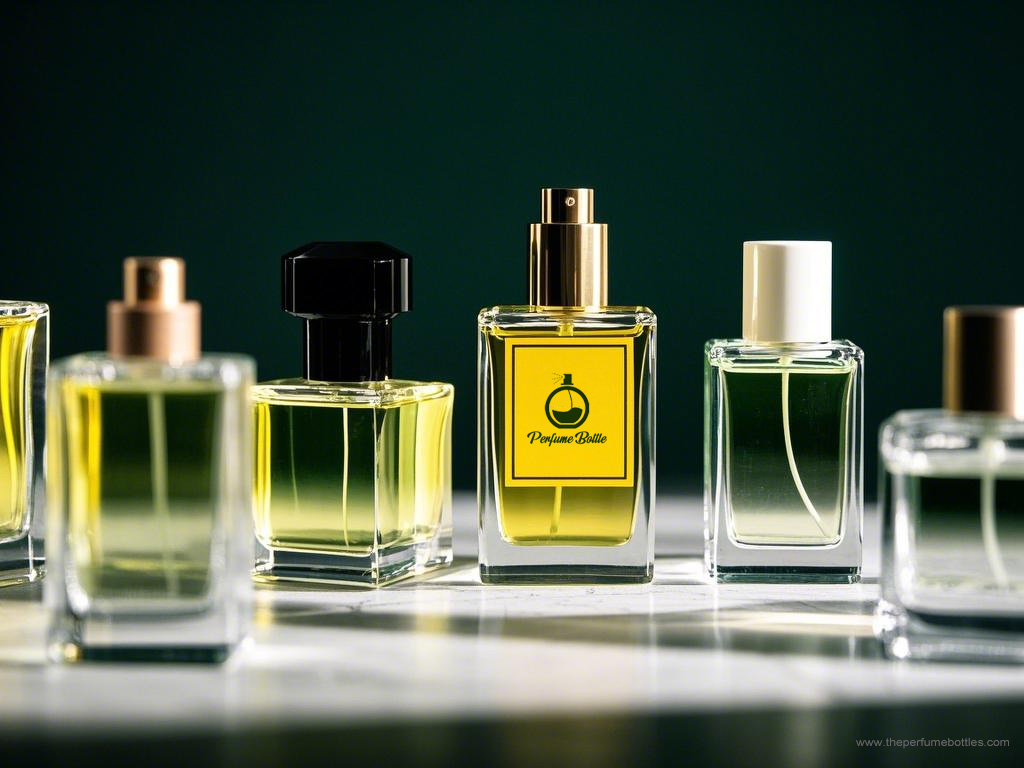
Ghidul tău complet pentru sticle goale de sticlă pentru parfumuri și uleiuri esențiale
Activezi în domeniul parfumurilor, uleiurilor esențiale sau cosmeticelor și cauți ambalajul perfect?
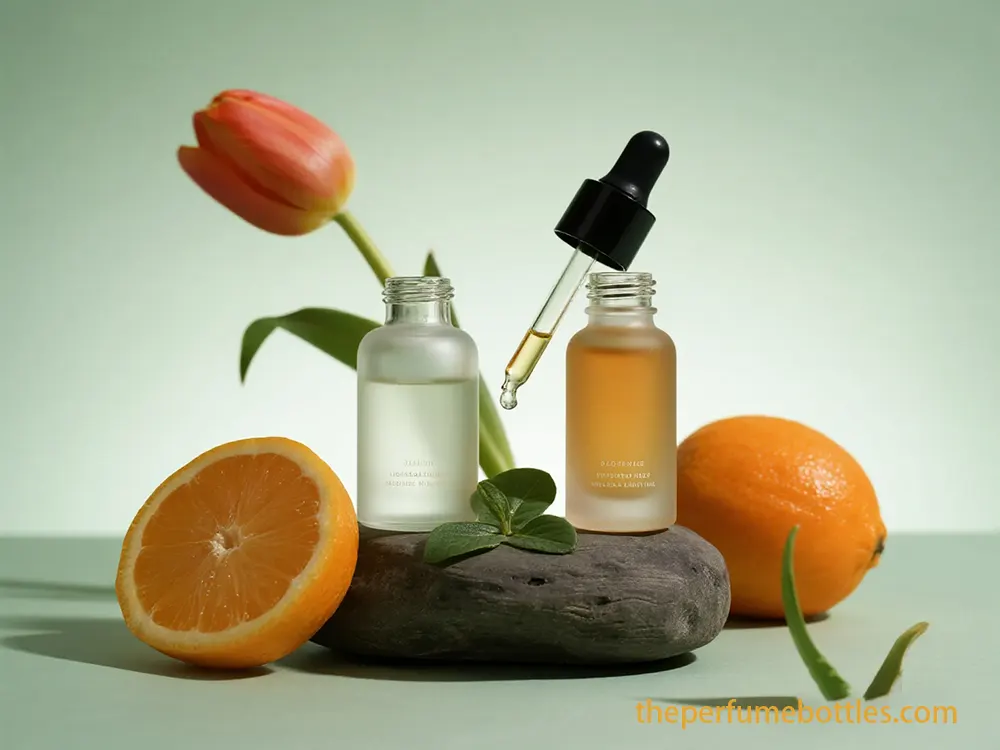
Studiu de caz: Sticle mici de sticlă cu pipetă personalizate pentru un brand elvețian de produse de îngrijire a pielii
Sticluțe mici de sticlă cu pipetă personalizate pentru un brand elvețian de produse de îngrijire a pielii, oferind o precizie impecabilă,

Modele elegante de sticle de parfum în formă de inimă pentru brandul tău
Sticlă de parfum romantică în formă de inimă, perfectă pentru ambalaje personalizate de parfumuri, cadouri și colecții speciale. Adaugă farmec și eleganță liniei tale de parfumuri.
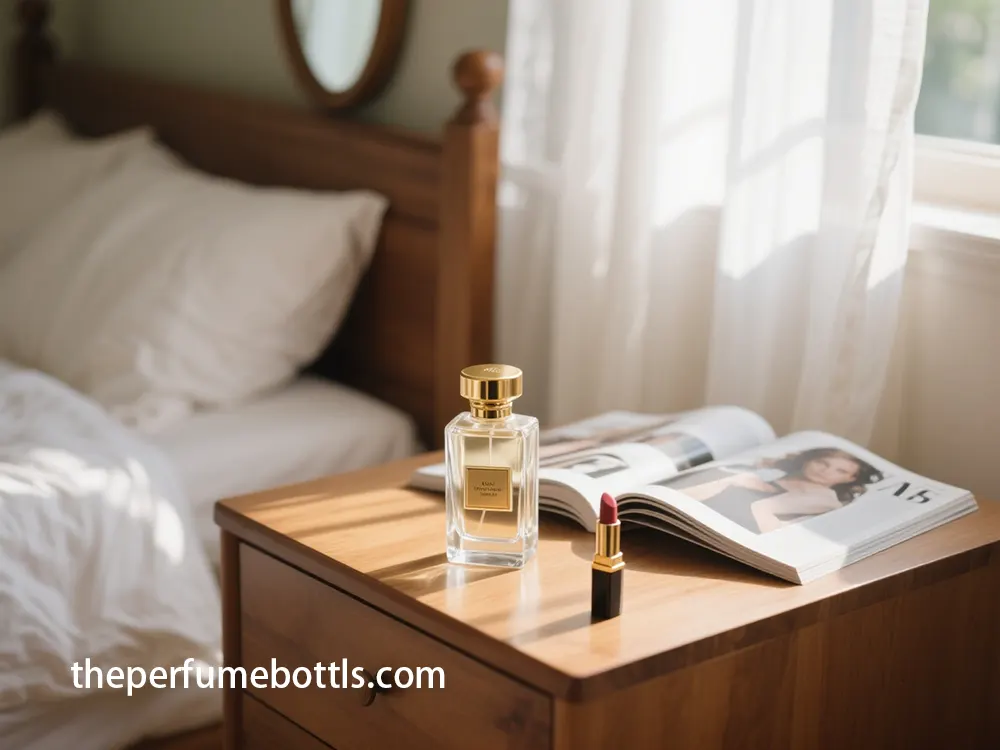
Evitați aceste 5 greșeli atunci când cumpărați sticle de ulei de parfum en-gros
Evitați greșelile costisitoare atunci când cumpărați sticle de ulei de parfum en-gros. Învățați 5 erori cheie pe care să le evitați și optimizați-vă aprovizionarea pentru calitate și economii.
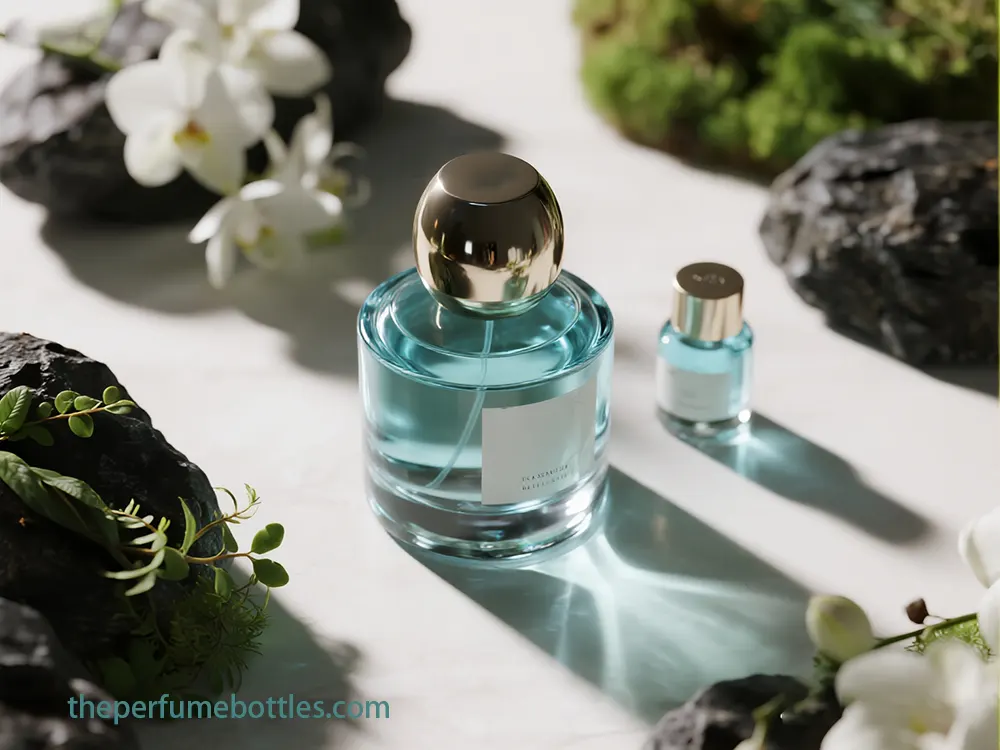
Studiu de caz: Vânzare en-gros de sticle de parfum personalizate pentru un brand italian
Sticlă de parfum de lux personalizată en-gros pentru mărci italiene - design de matriță de precizie, finisaj impecabil
- +86 186 5178 1159
- [email protected]
- Luni-Duminică 07:00-21:00
Etichete
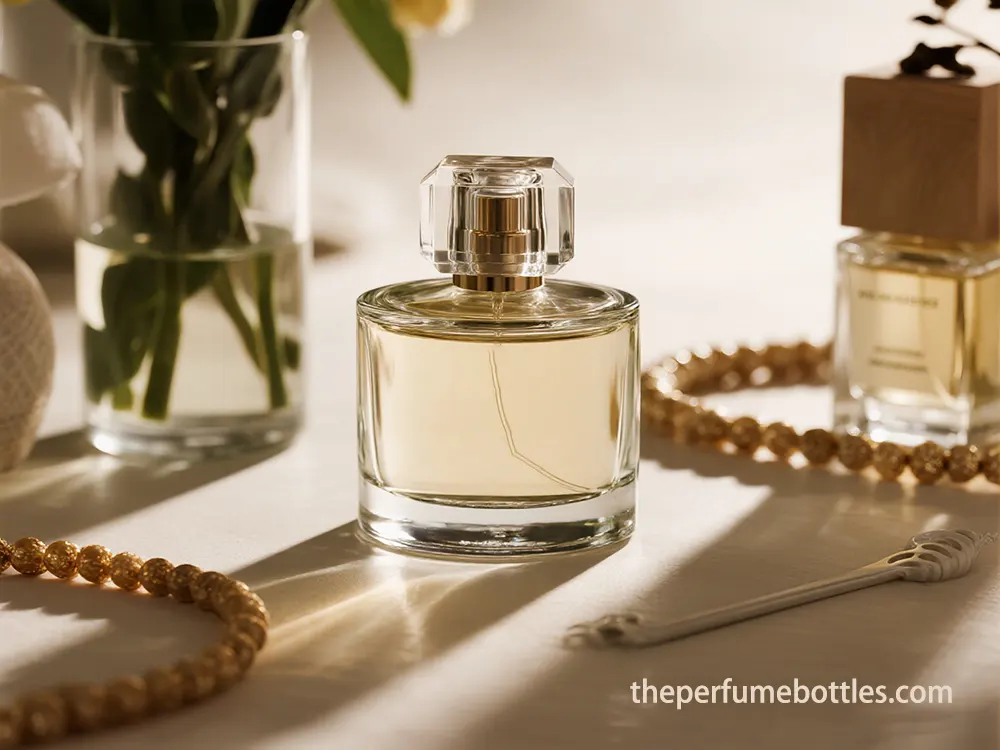
Un cadru strategic pentru selectarea unui furnizor de sticle de parfum din sticlă
Găsește-ți furnizorul strategic de sticle de parfum din sticlă cu ajutorul acestui ghid, care arată cum partenerul potrivit stimulează viteza și creșterea scalabilă a mărcilor de parfumuri.
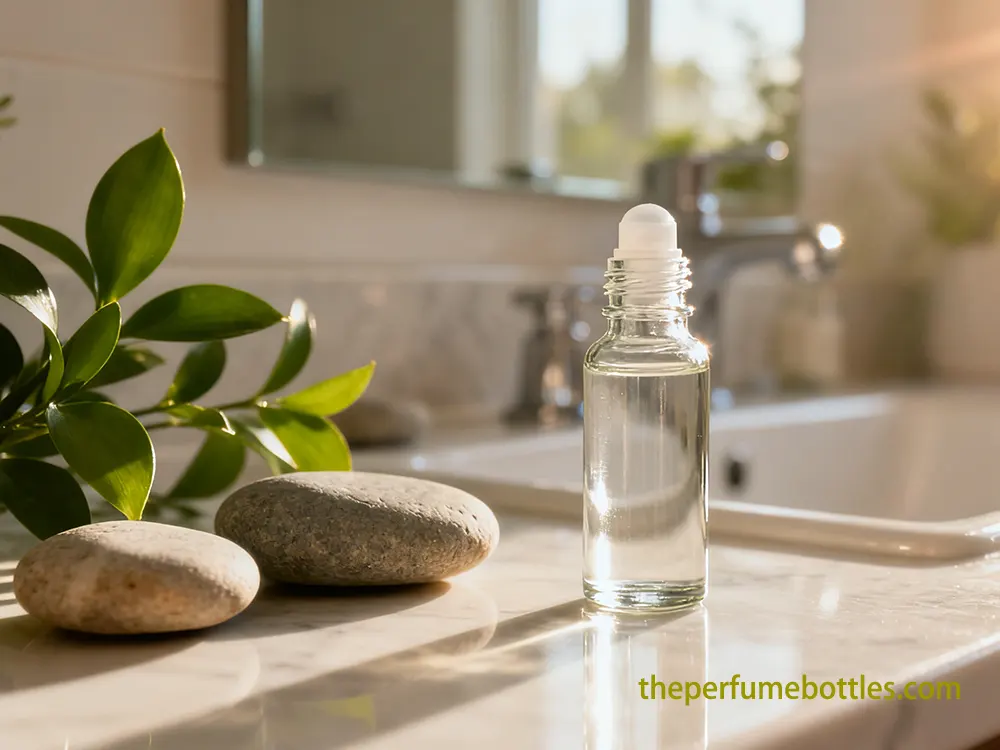
Studiu de caz: Fabrica noastră de sticle cu role din sticlă a livrat ambalaje pentru un brand de uleiuri esențiale
Un studiu de caz despre cum o fabrică de sticle cu role din sticlă a rezolvat problemele de stabilitate la rulare și durabilitate a gâtului subțire pentru a oferi sticle premium fiabile și fără scurgeri.
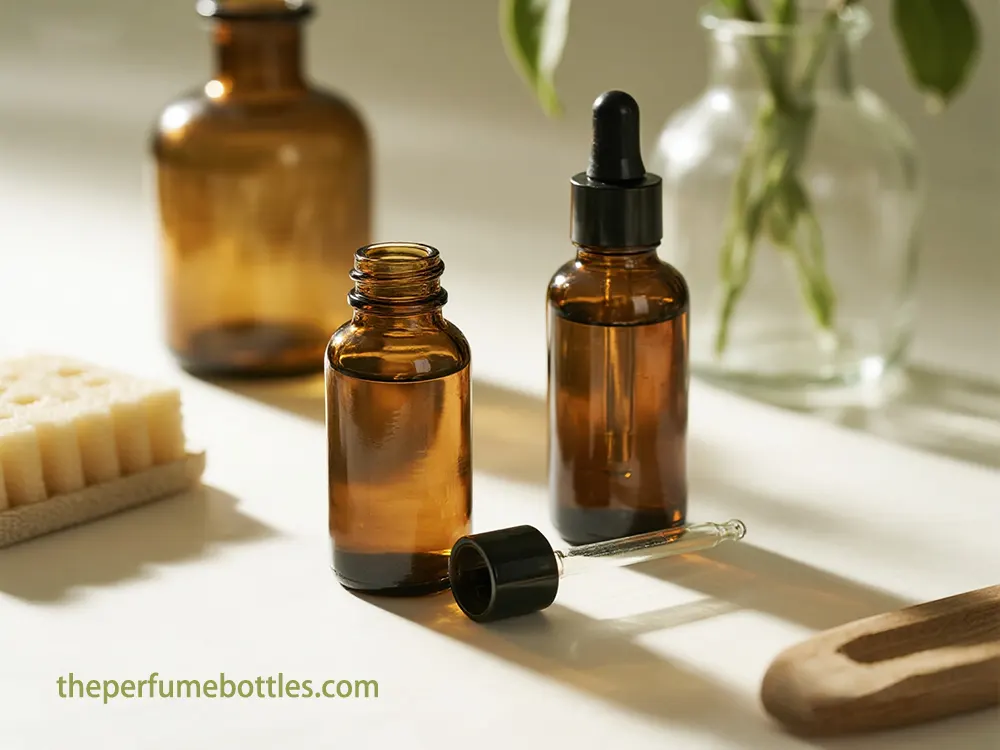
Studiu de caz: Cum o fabrică de sticle cu pipetă a ajutat un brand de uleiuri vindecătoare
Un studiu de caz despre cum o fabrică de sticle cu pipetă din sticlă a ajutat un brand portughez de uleiuri medicinale să obțină o dozare precisă, o aderență îmbunătățită și ambalaje personalizate premium.
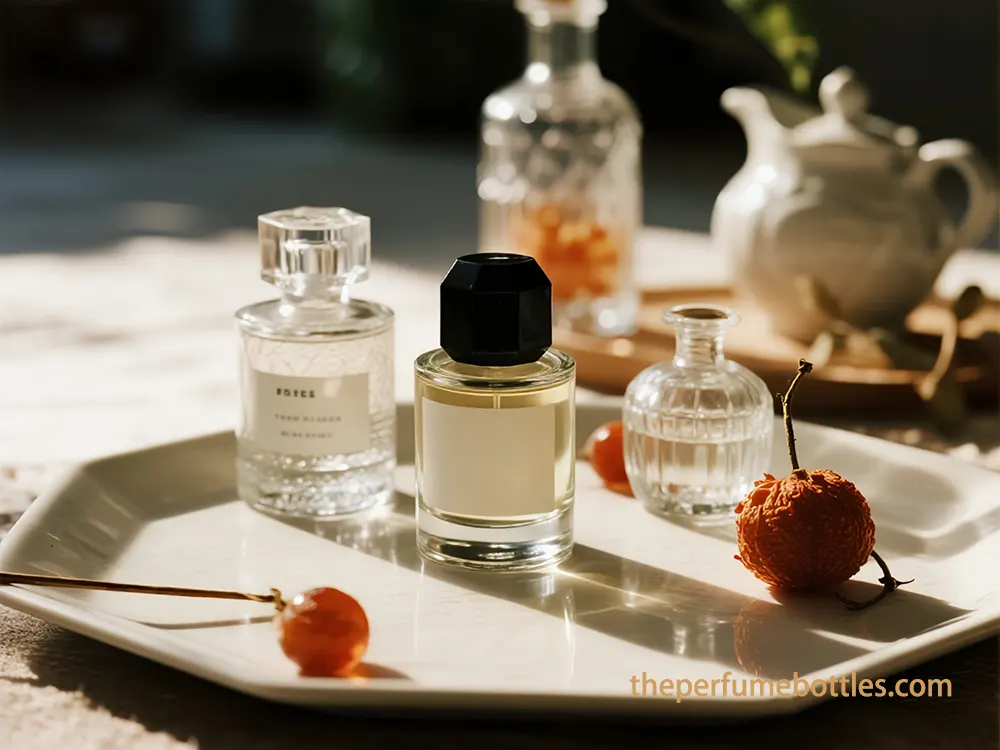
Călătoria unui parfum dintr-o fabrică de sticle de parfum din sticlă și nu numai
Descoperiți cum o fabrică de top de sticle de parfum din sticlă, chimie avansată și logistică globală

